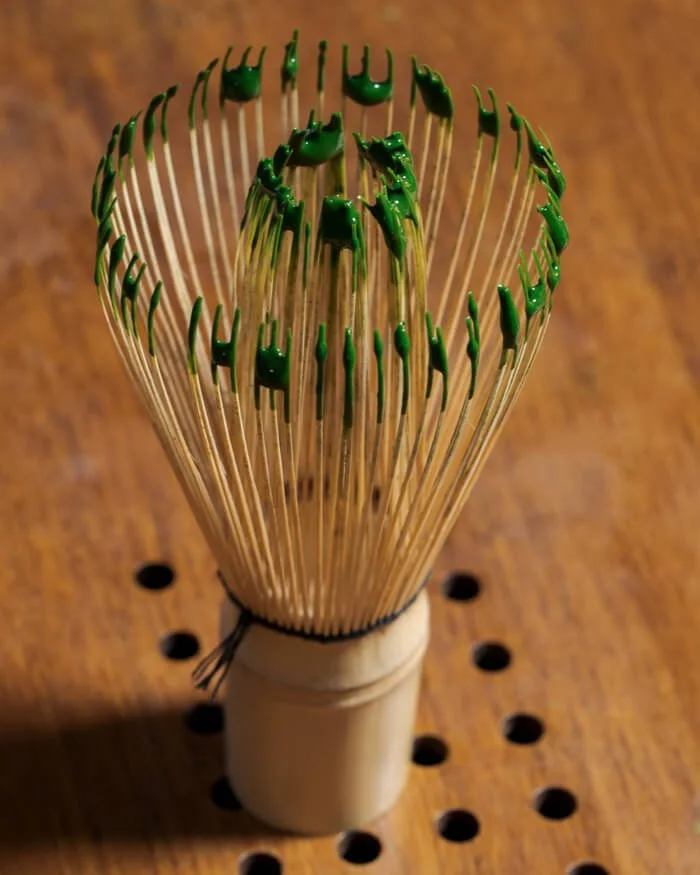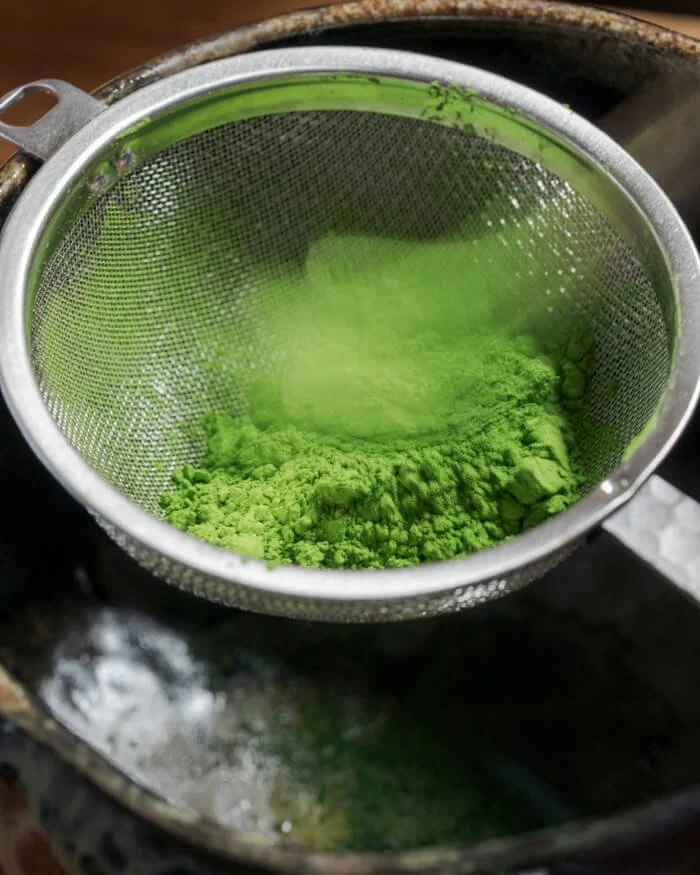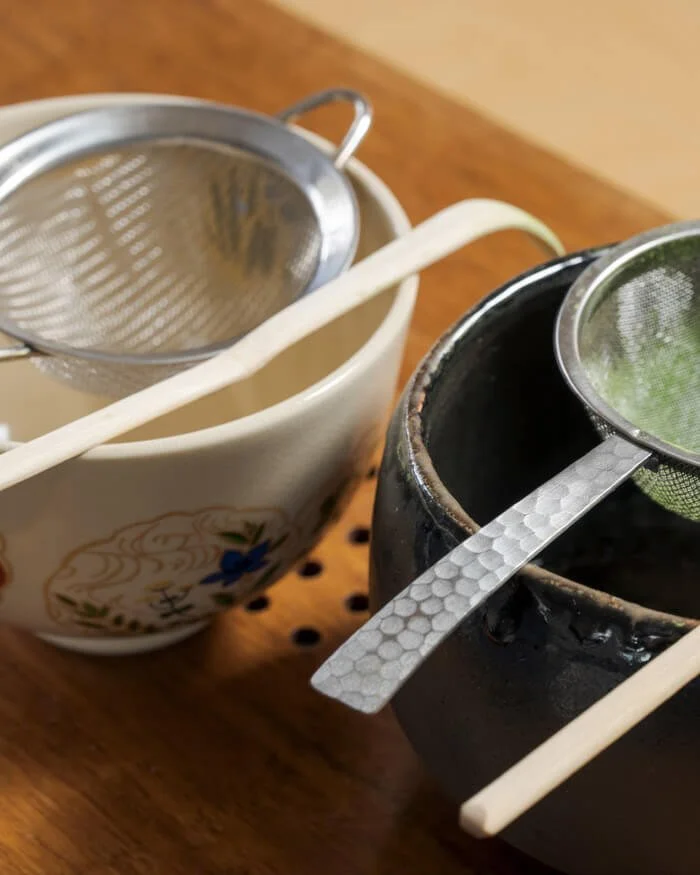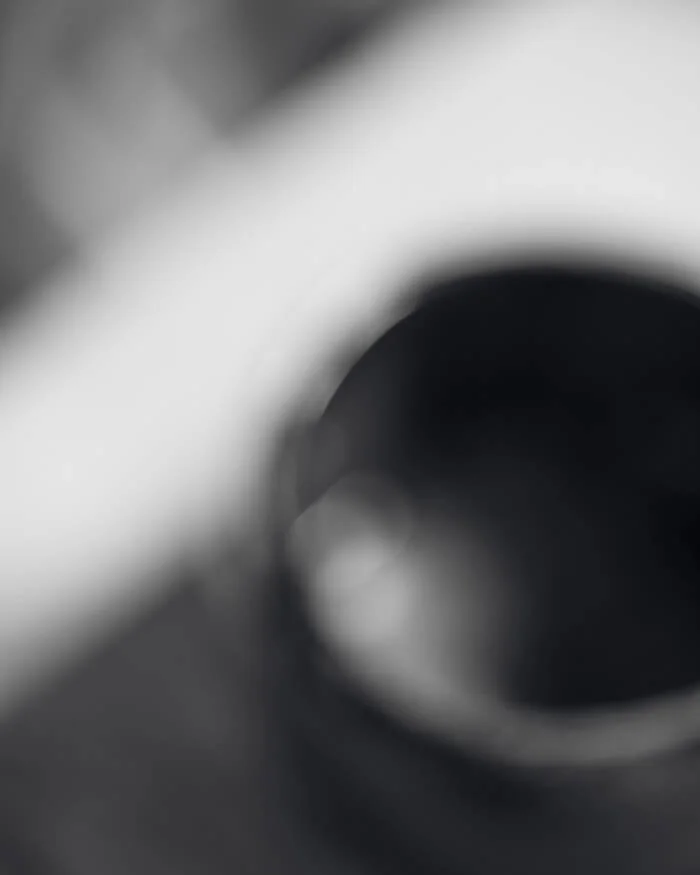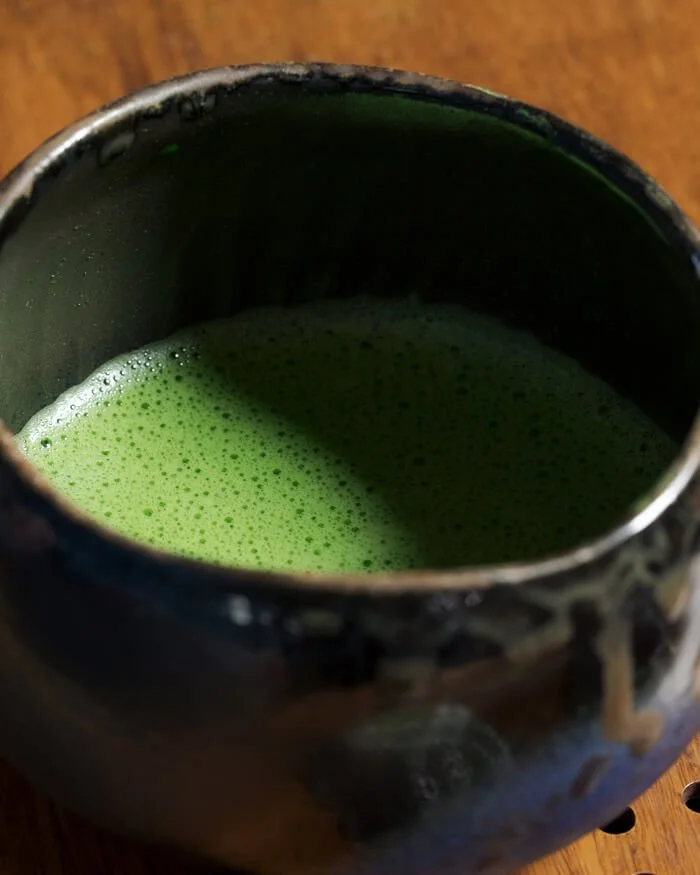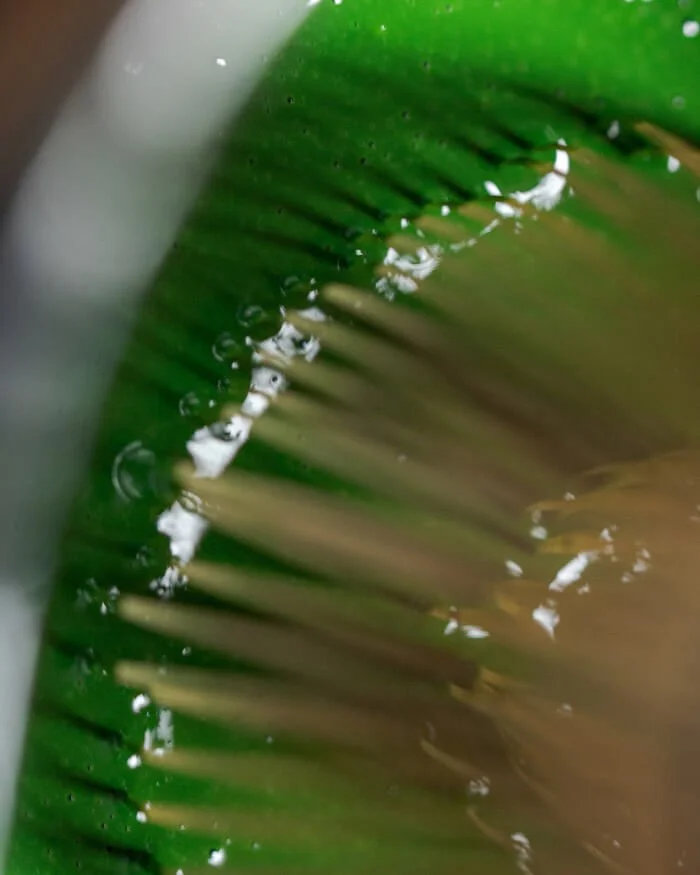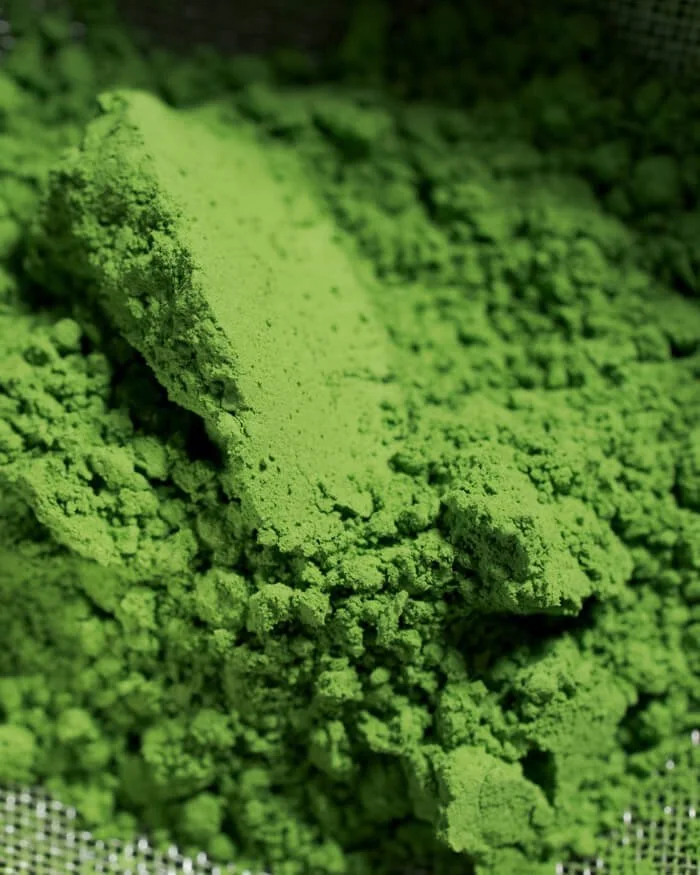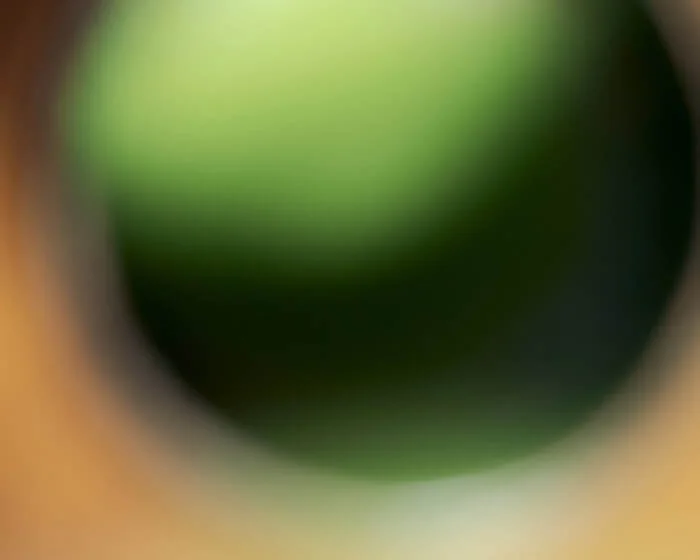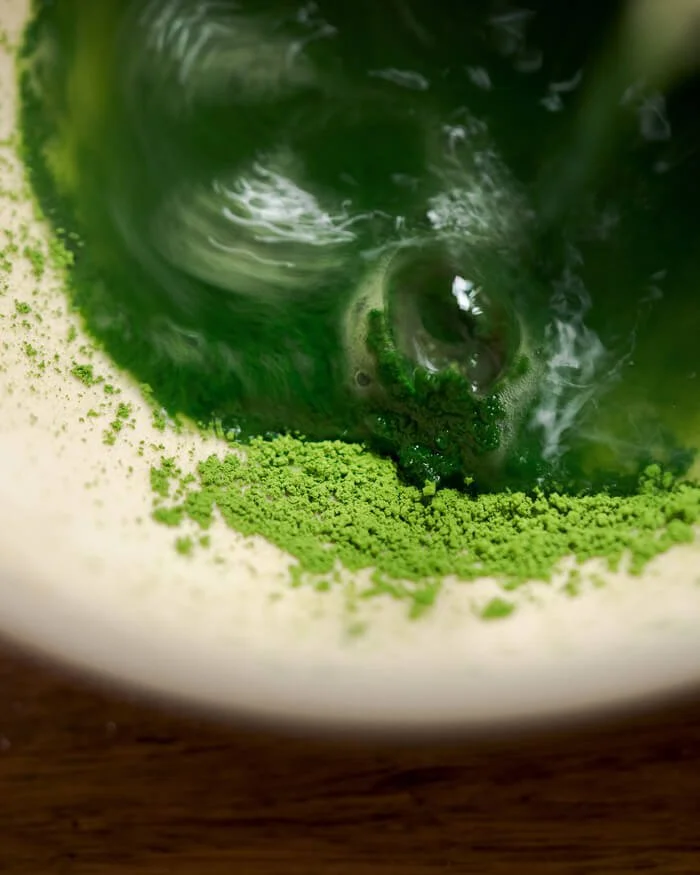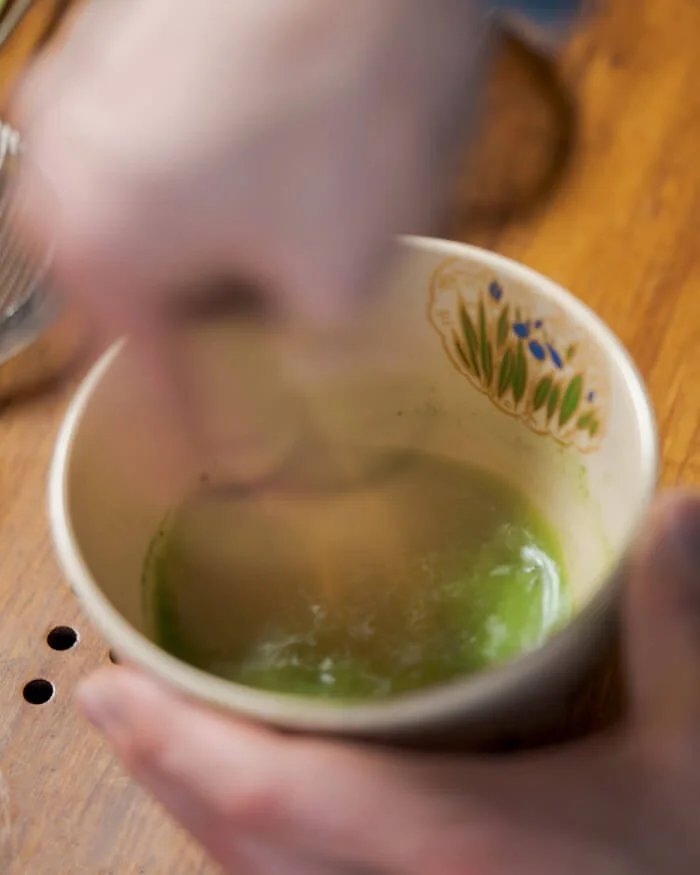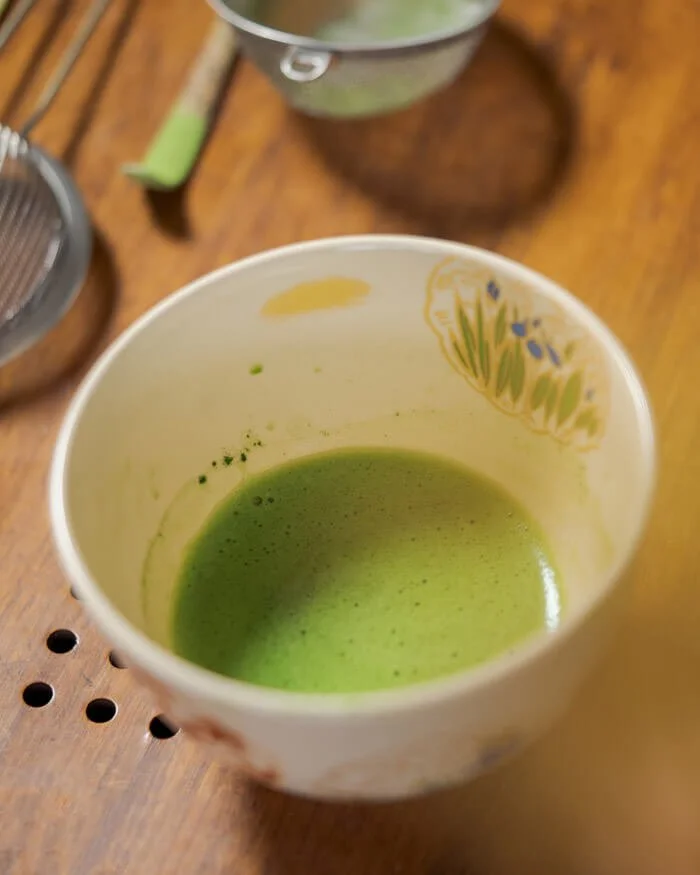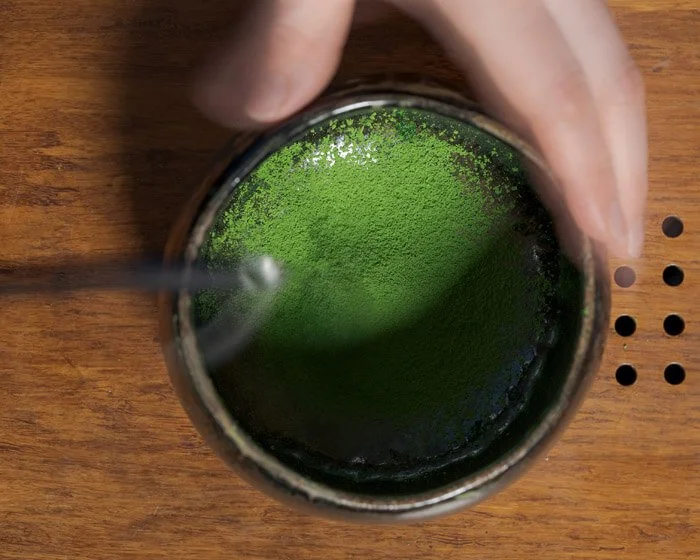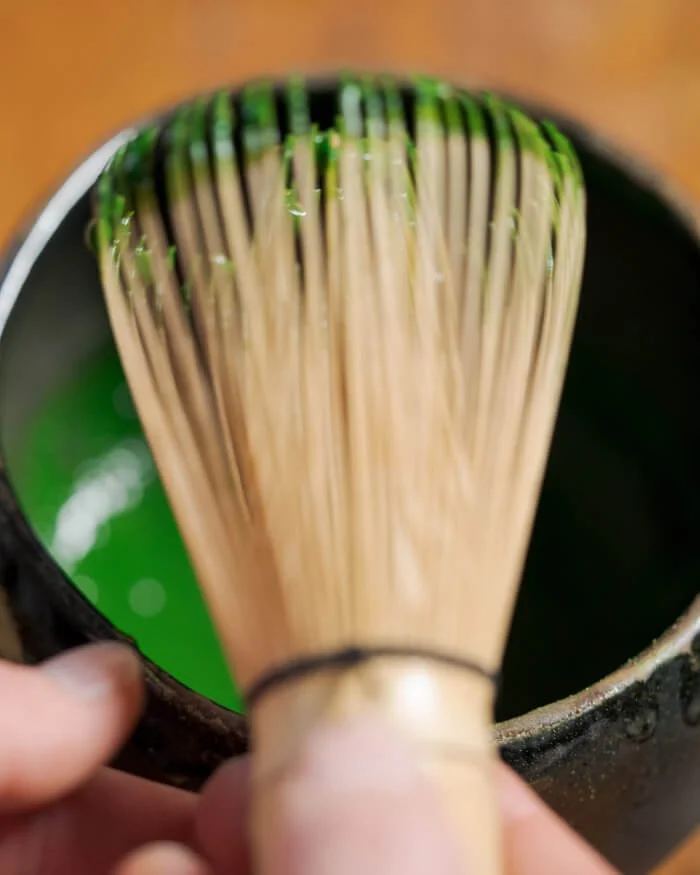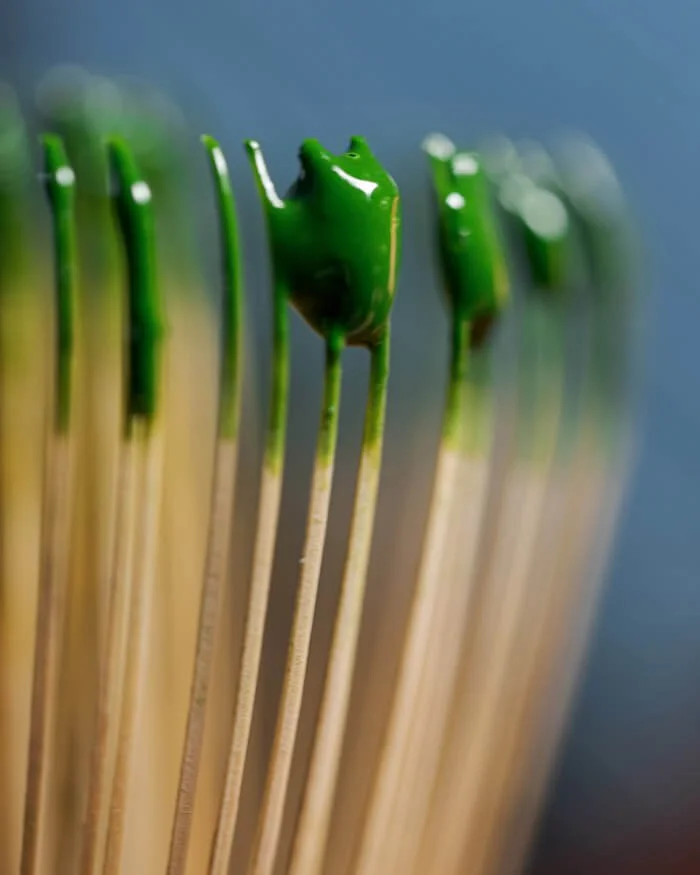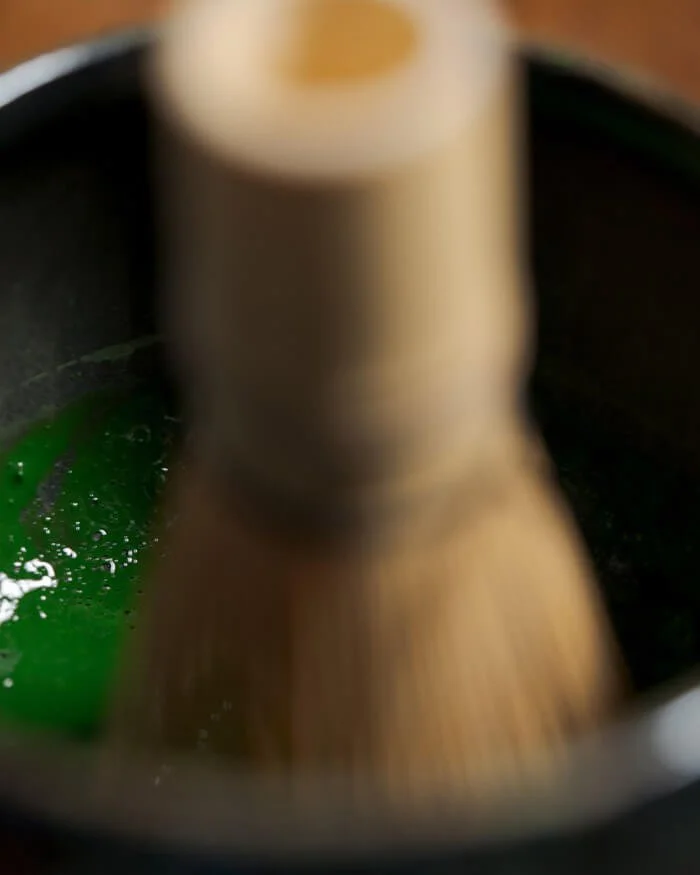Thick or Thin Matcha?
So you've likely heard of matcha -
which is powdered Japanese green tea.
But did you know it can be prepared a few ways that taste quite a bit different?
These two styles are:
Koi Cha (thick tea)
and Usu Cha (thin tea)
This article will go over some of the basics of matcha green tea and will discuss the differences between thin and thick matcha –
How to make both,
why drink one over the other,
and so much more...
I promise they're both tasty and super easy to prepare –
Let's get to it!
So What is Matcha?
Matcha is a Japanese green tea that's ground up into a fine powder –
roughly 5-10 microns large (a micron is 0.001mm, so super-super fine!)
This powder is then whisked into warm water with a bamboo whisk and then consumed.
Because the green tea leaves are technically suspended in the water (not steeped in the water), you consume more of the healthy benefits that come with the tea plant.
And because of this, matcha is thought to be quite healthy.
It's full of antioxidants and other health-promoting compounds.
It packs a healthy dose of caffeine and L-Theanine, an amino acid responsible for making you feel pretty relaxed.
History of Matcha Green Tea
Matcha has a long history in Japan –
But it has its roots in China.
Monks studying Buddhism in China brought back tea and the unique technique of whisking it into a foamy broth that helped with concentration during long meditations.
Long story short (which, by the way, is a story worth checking into here...) the Japanese developed a distinct, ritualistic ceremony around the making and consuming of matcha green tea.
This eventually led way to 3 distinct "schools" of Japanese tea ceremonies –
Urasenke, Omotesenke, and Mushanokōjisenke.
The Urasenke School is the largest and most well-known.
This ceremony, which is a highly ritualized, performative way of making and consuming tea, is known as Chanoyu.
The star of Chanoyu is matcha green tea and skilled preparation of it.
The Differences Between Usucha and Koicha
As I briefly mentioned above, there are separate schools of Japanese Tea Ceremony.
Some schools prepare their tea in slightly different ways within Chanoyu.
But generally speaking, two forms of tea are quite common –
Usu Cha (thin tea) and Koi Cha (thick tea).
Usucha - Also Known as “Thin Matcha”
Usu means thin –
So Usucha is tea made with a higher water to tea ratio.
It's balanced and has a smooth texture –
It's much lighter than koi cha (thick tea).
Usu cha is often served in short form tea ceremonies.
Within the Japanese tea ceremony, usu cha is typically served in separate bowls to each participant.
Koicha - Also Known as “Thick Matcha”
Koi Cha refers to a thicker version of matcha tea –
meaning it's matcha made with a high tea to water ratio.
So the resulting matcha has a much thicker texture (it's almost paste-like) and is much more intense flavor-wise.
It often uses about 2-3 times the amount of tea than what is used for Usucha (thin tea.)
This method is usually reserved for high-quality tea.
The more intense flavor requires tea that's higher quality in all realms – the growing location, the growing itself, and the processing.
It also takes great skill to prepare for consumption, as water temperature and proper whisking are important to a good bowl of tea.
The serving of koi cha occurs at full-length tea ceremonies.
Koi cha is typically served from one bowl and passed around to multiple guests.
Why Drink One Over the Other
When you're making tea for yourself, the choice is preference.
But within the Japanese tea ceremony, depends on a few variables – mainly the length of the ceremony and the quality of tea used to prepare matcha.
Usucha is typically served at more informal or shorter-length tea ceremonies.
(Koicha is served at formal, longer-length tea ceremonies.)
While all tea ceremonies use high-grade teas, the best and highest grades of matcha are often used for koi cha. Some teas are made by tea producers specifically for one type of preparation over the other.
How to Make Usucha or Koicha Matcha
I promise making matcha at home isn't as overwhelming as it might seem.
You need a few simple tea-making tools, which are worth investing in if you like matcha and want to make it often
But if you want to start with some easier methods, check our guide – 3 Ways to Prepare Matcha – it goes over the simplest ways and the traditional ways, which we'll go over below.
Making Thin Matcha (Usu cha)
Making usu cha is quite simple –
Here’s what you’ll need:
A Chawan (traditional tea bowl)
A Chasen (bamboo whisk)
A Chashaku (tea dispensing spoon) or teaspoon
A Matcha Furui (matcha sifter) or something to sift the matcha through
Proper water temperature is the crucial element of a properly made bowl of matcha.
You don’t want it too hot or too cold.
So aim for water that’s about 175F/80C.
So no boiling water!
Sift about 2 grams of matcha into the chawan.
Slowly add about 60 grams of cooled water (175F/80C - not boiling) into the chawan.
Whisk the tea by making a swift ‘W’ shape. The end goal is no clumps and a nice layer of froth on top. Don’t let the whisk scrape the bottom of the bowl.
And there you have it!
A bowl of thin tea.
Making Thick Matcha (Koi Cha)
Thick tea requires a larger amount of matcha powder –
So it's recommended to make this style of tea with higher quality matcha that's suggested use is for koi cha.
Why?
It will likely be less bitter and more flavorful.
Making koi cha is quite simple, but takes a little more skill than making usu cha does –
Here’s what you’ll need:
A Chawan (traditional tea bowl)
A Chasen (bamboo whisk)
A Chashaku (tea dispensing spoon) or teaspoon
A Matcha Furui (matcha sifter) or something to sift the matcha through
Like I mentioned before, water temperature is extremely important when making matcha.
So aim for water that’s about 175F/80C. So no boiling water!
Aim for water that’s about 175F/80C, never boiling water!
Sift about 3-4 grams of matcha into the chawan.
Slowly add about 60ml of cooled water (175F/80C - no boiling water!) to the bowl (less water = thicker tea.)
Whisk the tea by making a swift ‘W’ shape.
The goal is no clumps.
The tea will look thick and almost paste-like.
Enjoy!
The Final Whisk
Now that you know all the differences between thick and thin matcha –
how both taste, how to make them, and so much more...
You’re ready to dive deeper into the world of tea and tea culture.
Here at Ooika, both are quite important to us and we’d love for you to join us.
If you want to learn more about tea and tea culture, or if you just want to connect to fellow tea lovers, drop a comment below.
I read and respond to every comment –
talk to you soon!
MORE ON MATCHA

